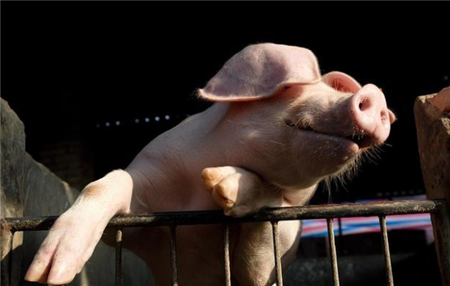What are the common feeds that are easy to poison pigs? (2)
6. Undetoxified cottonseed meal and fresh cottonseed leaves
Gossypol is contained in cottonseed and leaves, and some gossypol is excluded in the process of cottonseed extraction. The content of free gossypol varies according to different extraction methods, the lower the residual oil content is, the less gossypol is applied, and the better the quality of cottonseed cake is. The lowest gossypol content is 0.01%, and the highest gossypol content is 0.6%. The content of free gossypol in cottonseed cake fed to pigs is not higher than 0.04%, and the maximum tolerance of pigs to free gossypol in diet is 0.01%. The steaming and frying time of "soil press cake" in rural areas of our country is very fast or only fried without steaming, and the damage of free gossypol is less. The content of gossypol in the cake is often as high as 0.2%-0.3%. This kind of cake must be fed with the same amount of ferrous sulfate as free gossypol in the diet. After detoxification, the daily feeding amount of cottonseed cake adult pigs did not exceed 1kg, and that of 3-month-old pigs did not exceed 100g. Fresh cottonleaf adult pigs without detoxification can be poisoned by feeding 3kg every day and piglets fed with 1.5kg.

Undetoxified rapeseed meal
Rapeseed cake contains glucosinolates, which is non-toxic, but under neutral conditions, it is hydrolyzed under the action of myrosinase in rapeseed cake to produce harmful substances such as isothiocyanate and oxazolidinone. Myrosinase is also found in some intestinal bacteria, so feeding untreated rapeseed containing glucosinolates is more harmful. Excessive amount of rapeseed cake will affect the weight gain and feed conversion rate of growing and finishing pigs. General feeding rapeseed cake can be treated by high temperature Alkalization and control and quantity. In the feed of fattening pigs, the proportion of rapeseed cake in fine feed should not exceed 20% or 25%.
8. Spoiled peanut meal
Peanut cake is most likely to be infected with Aspergillus flavus and produce aflatoxin during storage. Aflatoxins are produced on peanut cakes, which cannot be eliminated even after cooking.
Moldy corn, grain bran and mixed feed
These moldy feeds contain Aspergillus flavus, Aspergillus gibberellus, rust and so on, and a variety of mold poisoning will occur after pig food.
Excessive distiller's grains
The addition amount of distiller's grains to pigs should not exceed 30% of the total feed, otherwise alcoholism will occur. If the above poisoning occurs in pigs, one or more of the following can be used in first aid:
1% methylene blue (methylene blue), 20% sodium nitrite, 20% sodium thiosulfate, 40% malotropine, and intramuscular or subcutaneous injection of Anjia plus, magnesium sulfate, glucose saline and so on. The dosage can be measured in accordance with the doctor's advice or according to the instructions and depending on the poisoning situation, and sodium thiosulfate, baking soda and magnesium sulfate can also be used according to the poisoning time and the size of the pig to relieve the symptoms.
Related
- On the eggshell is a badge full of pride. British Poultry Egg Market and Consumer observation
- British study: 72% of Britons are willing to buy native eggs raised by insects
- Guidelines for friendly egg production revised the increase of space in chicken sheds can not be forced to change feathers and lay eggs.
- Risk of delay in customs clearance Australia suspends lobster exports to China
- Pig semen-the Vector of virus Transmission (4)
- Pig semen-the Vector of virus Transmission (3)
- Five common causes of difficult control of classical swine fever in clinic and their countermeasures
- Foot-and-mouth disease is the most effective way to prevent it!
- PED is the number one killer of piglets and has to be guarded against in autumn and winter.
- What is "yellow fat pig"? Have you ever heard the pig collector talk about "yellow fat pig"?



